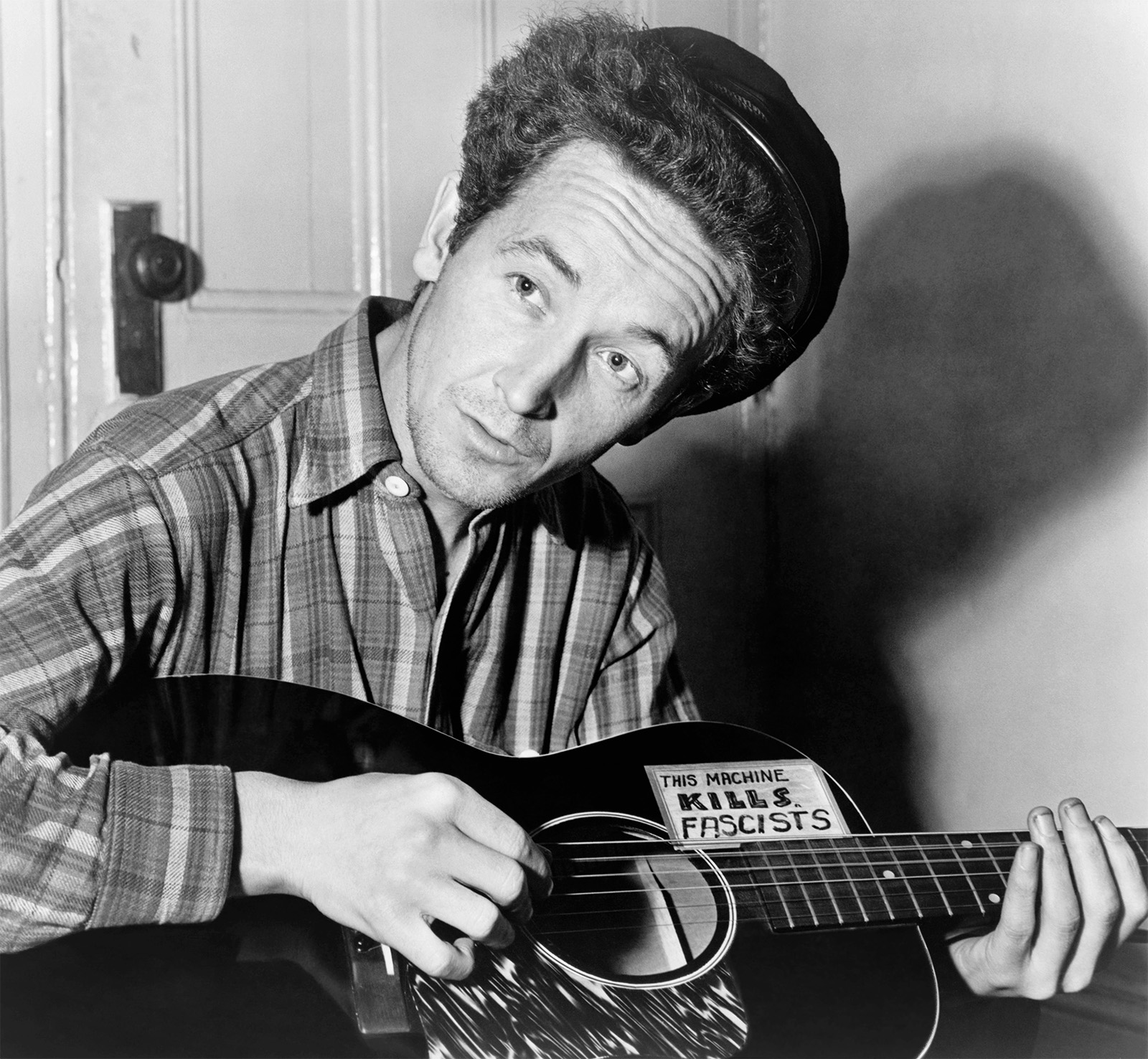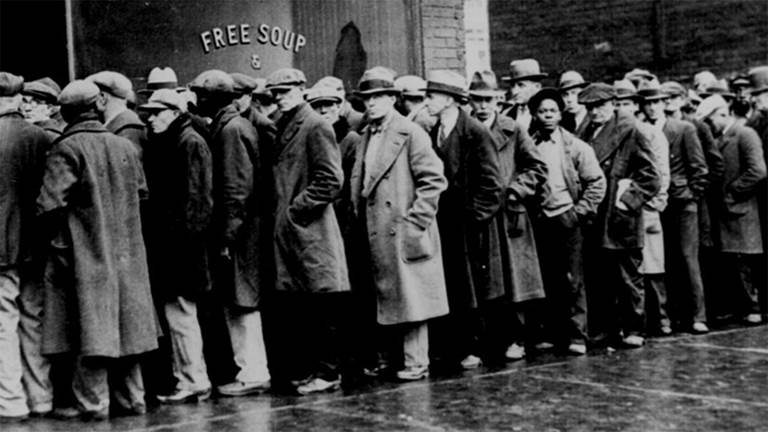Woody Guthrie
Woodrow Wilson Guthrie was born in the small town of Okemah, Oklahoma, on July 14, 1912. Named for the soon-to-be-elected Democratic candidate for president, Guthrie remembered an early boyhood full of music, singing, and plenty of pocket money. His dad was a successful real estate wheeler-dealer. The Guthries were the first people in town to own a car.
Tragedy and trouble began to mount after 1919. Guthrie’s sister died in a fire and his dad’s business collapsed. His mom had a nervous breakdown and was committed to the state mental hospital. He and his brother were left to fend for themselves.
The teenager began to travel the country, strumming his guitar and singing for coins. As he wandered, he became increasingly critical of the injustice he associated with American capitalism. He was drawn toward the plight of American workers and embraced socialist beliefs. During World War II, though, he served in the Merchant Marine and U.S. Army. He entertained sailors and troops with songs blasting fascism, the brutal, nationalistic system of government operated by Germany’s Adolf Hitler and Italy’s Benito Mussolini.
Guthrie viewed folk music as a potent means of protest. About his writing and singing he said:
"I am out to sing songs that will prove to you that this is your world and that if it has hit you pretty hard and knocked you for a dozen loops, no matter what color, what size you are, how you are built, I am out to sing the songs that make you take pride in yourself and in your work. And the songs that I sing are made up for the most part by all sorts of folks just about like you."
Guthrie died of Huntington’s disease in 1967, but not before inspiring a new generation of singer/songwriters including Ramblin’ Jack Elliot, Bob Dylan, and Bruce Springsteen.







